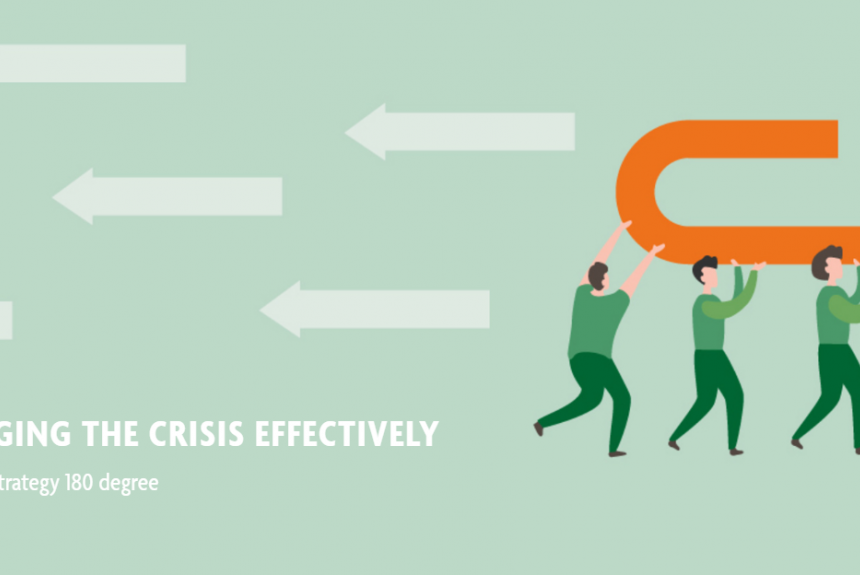COVID-19 is disrupting all sectors including asset management - plants around the world are operating in emergency mode or are shut down completely. There is no hint about how long the situation will last nor can anyone realistically predict the scope of the economic impact it will have. Therefore it is crucial to minimize costs while not compromising the effectiveness of the plants. These 6 recommendations will help you to align your asset management according to requirements and turn the challenges into opportunities. The "bull market" has collapsed. For eleven years, stock market prices knew only one direction: up. COVID-19 suddenly put an end to the seemingly eternal upward trend. A global recession seems inevitable. The only question that no one can seriously answer at the moment is: Which development will the recession take? Economists distinguish between so-called "V", "L" or "U" movements depending on the curve shape. Within a few days, companies had to drastically limit their...
Wednesday, April 15, 2020 - 01:41
Monday, October 7, 2019 - 14:58
Industry 4.0 is happening. Businesses need to digitise to thrive. What will this mean for the future of asset management? Will there still be a need for structures and processes like asset management strategies and plans, or will machine learning and cognitive technologies take the lead in driving an agile approach of strategy to action? Save us from process paralysis Today, operationally focused asset management organisations are already demanding more from their asset management systems. They don’t want to be bogged down with heavy processes that hamper efficient decision making. They want the right amount of information, at the right time in the right format to make a quick decision that improves operational KPIs to delight the customer, whilst aligning to their strategic objectives. The field of asset management must keep pace with change and evolve to support more effective and efficient decision-making and action-taking. As asset management professionals, we must lead this...
Thursday, February 28, 2019 - 13:26
When it comes to climate change, this is the decade of truth. Without taking additional measures, temperatures on earth will rise exponentially. The expectation is that global energy use will increase by 20 to 25% in the next 15 years as a result of population growth and economic development. Industries are under pressure to improve their energy efficiency, to use more sustainable energy sources and to reduce emissions. Carbon pricing is based on the principle that the polluters themselves are the ones who pay, and it is an integral part of (inter)national mitigation strategies. In order to decrease reliance on fossil fuels, efforts are also being made to further develop renewable energy generated from wind, geothermal heat, the sun and water. By 2025, it is expected that onshore wind and solar energy will be the cheapest forms of energy, and that fossil fuel use will have already peaked. WHAT IS THE PROBLEM? From an asset management perspective, we can argue that the earth is our...
Thursday, February 28, 2019 - 13:24
Managing physical assets is about dealing with risks over the lifecycle of assets. However Asset Management is often misunderstood: not realizing that it is also a way of thinking that involves the organization and business as a whole. During my more than 25 years’ maintenance experience, I have observed how Maintenance Management transcends into Asset Management without any effective adjustment to the structure, strategy or mindset of an organization. I observed, more than once, cases where production managers (often appointed as Asset Manager) did not discuss subjects such as risk based strategies and business requirements with their maintenance counterpart and technical specialists. I have even witnessed organizations where it seemed that they had opposite concerns and where they were fighting each other about details. Another custom often seen is that fully outsourced maintenance contracts are based on cost (pursuing a reduction of Operational and Capital Expenditure) rather than...
Thursday, February 28, 2019 - 13:24
Insufficient control over capex? Unexpected major expenses? The sentence: “that will definitely last another 10 years?” These are all good reasons to consider preparing a Long-Term Asset Replacement Plan (LTARP). I would like to use my contribution to this blog to explain what the LTARP is and what it is used for. THE LTARP IN A NUTSHELL A Long-Term Asset Replacement Plan (LTARP) gives you an insight into the condition and degradation of your installations and, as such, the overall life and expected replacement period of assets. It also forms the basis for investment plans. If you link a replacement value to the life of an installation, it immediately becomes possible to visualize the investments necessary in the years ahead. The LTARP results in a long-term investment plan, substantiated by a knowledge of systems, the market and employees. APPROACH After identifying critical assets, the following will be recorded for each asset individually: Current preventive maintenance. If...
Thursday, February 28, 2019 - 13:22
In their ambition to create value with their assets, Asset Owners often struggle with managing their critical knowledge. In times of an ageing workforce, (technical) personnel shortage and a fast changing environment this issue is moving more and more towards the strategic Asset Management agenda. Alike the management of assets the management of knowledge also is a valuable profession. Best practices of Knowledge Management are helpful to define an effective knowledge management strategy: define which knowledge is critical, capture critical knowledge, apply this knowledge in practice and incorporate lessons learned in the Asset Owner’s common knowledge. As a provider of Asset Management services Knowledge Management (KM) is essential for Stork Asset Management Technology to secure: Controlled quality of the delivery of services to the client Efficiency: get it right the first time, avoid reinventing the wheel One uniform way of working: the stamp of approval Providing latest insights...

















